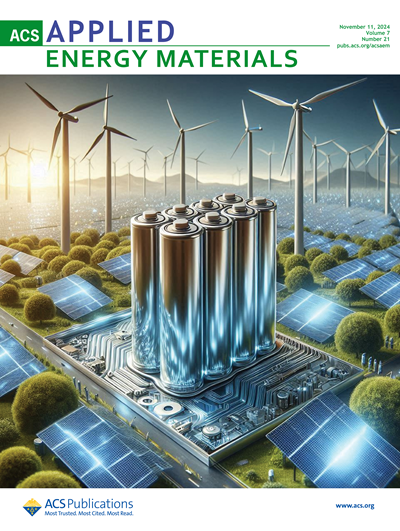应用于风力涡轮发电机先进制造的先进多材料形状优化方法
IF 5.4
3区 材料科学
Q2 CHEMISTRY, PHYSICAL
引用次数: 0
摘要
目前,许多公用事业规模的风力涡轮发电机原始设备制造商都依赖进口稀土永磁体,而这种永磁体很容易受到成本不稳定带来的市场风险的影响。为了降低这些发电机的生产成本,保持市场竞争力,一些小型风能制造商正在不断改进发电机的设计和制造。然而,传统的设计和制造方法对风力发电性能的改善微乎其微。这项研究提出了一种新方法,利用最先进的三维(3D)打印聚合物粘结永磁体和钢材,重新设计减少稀土永磁体的 15 千瓦基准风力涡轮发电机。我们引入了对称、非对称和多材料磁体参数化方法来进行形状优化。我们将对称和非对称方法扩展到定子中的背铁,以进一步研究使用较少活性材料对性能改善的影响和机会。我们采用实验设计方法和参数化计算机辅助设计来生成形状,并通过磁热建模和有限元分析来评估不同的设计。与基准发电机相比,我们使用自适应采样技术来确定性能更好的设计,这些设计具有更小的磁体质量、更高的效率和更低的齿槽转矩。非对称磁极设计使磁铁质量在 4.77-5.37 千克之间,比基准发电机轻 27%-35%,这表明存在一种新的设计自由度,可通过 3D 打印等先进制造技术实现。对定子中的背铁进行整形后,电工钢的材料节省达 14.62 千克,比基准定子轻 20%。我们进行了结构分析,从机械完整性和气隙刚度的角度评估了优化的非对称转子设计。结果表明,磁性最佳形状轮廓对径向刚度有积极影响,并且发现了一种最佳解决方案,可将结构质量减少近 30 千克,比基准质量轻 29%。本文章由计算机程序翻译,如有差异,请以英文原文为准。
Advanced multimaterial shape optimization methods as applied to advanced manufacturing of wind turbine generators
Currently, many utility‐scale wind turbine generator original equipment manufacturers are dependent on imported rare earth permanent magnets, which are susceptible to market risks from cost instability. To lower the production costs of these generators and stay competitive in the market, several small wind manufacturers are pursuing continuous improvements to both generator design and manufacturing. However, traditional design and manufacturing methods have yielded marginal improvements in wind power performance. This work presents novel methods to redesign a baseline 15‐kW wind turbine generator with reduced rare‐earth permanent magnets by leveraging cutting‐edge three‐dimensional (3D) printed polymer‐bonded permanent magnets and steel. Symmetric, asymmetric, and multimaterial‐magnet parametrization methods are introduced for shape optimization. We extend the symmetric and asymmetric methods to the back iron in the stator to further investigate the impact and opportunities for performance improvements with lesser active materials. We employ a design‐of‐experiments approach with parametric computer‐aided design for shape generation and evaluate different designs by magneto‐thermal modeling and finite‐element analysis. We use adaptive sampling technique to identify better performing designs with lesser magnet mass, higher efficiency, and lower cogging torque when compared with the baseline generator. Asymmetric pole designs resulted in a magnet mass in the range of 4.77–5.37 kg, which was 27%–35% lighter than the baseline generator, suggesting that a new design freedom exists that can be enabled by advanced manufacturing, such as 3D printing. Shaping the back iron in the stator resulted in material savings in electrical steel of up to 14.62 kg, which was 20% lighter than the baseline stator. We conducted a structural analysis to evaluate an optimized asymmetric rotor design from the point of view of mechanical integrity and air‐gap stiffness. The magnetically optimal shape profile was shown as having a positive impact on the radial stiffness, and an optimal solution was discovered to reduce the structural mass by nearly 30 kg, which was 29% lighter than the baseline.
求助全文
通过发布文献求助,成功后即可免费获取论文全文。
去求助
来源期刊

ACS Applied Energy Materials
Materials Science-Materials Chemistry
CiteScore
10.30
自引率
6.20%
发文量
1368
期刊介绍:
ACS Applied Energy Materials is an interdisciplinary journal publishing original research covering all aspects of materials, engineering, chemistry, physics and biology relevant to energy conversion and storage. The journal is devoted to reports of new and original experimental and theoretical research of an applied nature that integrate knowledge in the areas of materials, engineering, physics, bioscience, and chemistry into important energy applications.
 求助内容:
求助内容: 应助结果提醒方式:
应助结果提醒方式:


